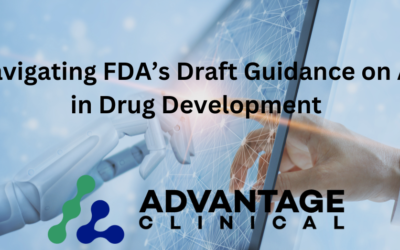Training/learning programs can exist in a number different forms. Sometimes they are a collection of courses, documents, and training classes that have been developed over a number years to meet requirements as specific needs came and went – what we typically refer to as legacy programs. In some cases, there is a clear learning plan that all employees participate in but it needs a bit of ‘sprucing’ up. And in other instances, there might not be anything at all! Not to worry…there is a clear process that can help you approach any of these situations.
Every organization has its own unique culture and set of needs, but that doesn’t mean we can’t apply a consistent strategy in how we identify and address those needs. We call this approach the 7A model.

- Appraise – To kick off the process, get critical and paint a realistic picture of what your current state is for training at your organization. You need to be honest…what isn’t working right now? Where are the failures? From there, move on and highlight successes as well. These can become a baseline for what comes next.
- Articulate – Now it’s time to think about what your future state should look like and articulate that vision clearly. Where do we want to go? How do we create a solid, integrated learning plan? Which successes from our current system do we want to replicate? This vision for the future should be well defined and clearly stated.
- Analyze – The next step is to compare your current state to your future state and analyze the gaps. What needs to change to move you closer to the future state? Identify actionable items and tangible steps that you can take to move the needle closer to your target vision. Consider which resources you might need, including equipment, software, and personnel. You should also think about how to prioritize your tasks so that you can be most effective. This data will become your road map for how to move forward.
- Align – You must ensure that your road map includes items that support all levels of the business: individual performance goals, team/group/department targets, and overall company objectives. Aligning your training activities to the business ensures that training and learning become a systemic, integrated, and valued part of your organization. If training isn’t supporting our company culture, people, and bottom line…then why are we doing it?
- Act – It’s time to start taking action! Begin implementing items from your road map. Stay true to your vision, but don’t be afraid to adjust and be flexible in order to meet the needs you are seeing within the organization. Remember to pilot everything where possible including training programs, online resources, mentoring strategies, and any other learning solutions you plan to employ.
- Asses – As soon as you begin implementing, you should have a clear idea of how to assess your strategies. Identify metrics and various evaluation techniques that will help to give you a clear idea of what is or isn’t working.
- Augment – Based on your assessment data, you can begin to improve your processes. Try out new tactics and approaches that will engage the organization and make them active participants in the learning process. Look for ways to augment what you have built that will get everyone excited about training. Be creative!
While implementing a new training/learning program isn’t easy, the 7A model can help you to streamline your activities and really hone in on what is going to have the greatest long term impact. While the intention of the model is cyclical, that doesn’t mean that you may not necessarily need to redress certain steps given the complexity of your implementation.
This overview is intended to give you a brief picture of how the 7A model can work. There are many tools and resources that can help move us through the process. For more information on the 7As, come visit the site again as we take a deeper look into each phase of the model.
Happy training!
Luigina McCarthy
Training and Instructional Design Specialist



